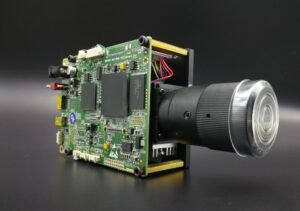Deepfake Negative Examples
Deepfake technology, which uses artificial intelligence to create realistic fake videos, has become increasingly popular in recent years. While this technology has many beneficial applications, there are also several negative examples of deepfakes that raise concerns about their potential misuse and impacts on society.
Key Takeaways:
- Deepfake technology poses significant risks, including the potential for misinformation and manipulation.
- There have been instances of deepfakes being used for malicious purposes, such as revenge porn and political propaganda.
- Increased awareness and development of detection methods are crucial in mitigating the negative impacts of deepfakes.
One of the most prominent negative examples of deepfakes is their use in spreading misinformation. *Misinformation can quickly spread through social media platforms, undermining trust and creating confusion among users.* Deepfakes can be used to create convincing fake videos of public figures, politicians, or celebrities, making it harder for people to distinguish between real and manipulated content.
Deepfakes have also been used for malicious purposes, such as revenge porn. *This unethical practice involves superimposing someone’s face onto explicit content, damaging their reputation and violating their privacy.* Such deepfake videos can cause psychological harm and have far-reaching consequences for the victims.
Political propaganda is another area where deepfakes have been misused. The ability to create realistic videos of politicians saying or doing things they never did can be exploited to spread false information and manipulate public opinion. *This can lead to a distortion of reality and impact the democratic process.*
Impact of Deepfake Negative Examples:
Deepfake negative examples have wide-ranging effects on society. They can erode trust, create division, and even incite violence. The unchecked spread of deepfakes can undermine the credibility of authentic content and make people question the authenticity of any video they encounter.
| Effects of Deepfake Negative Examples: | Impacts on Society: |
|---|---|
| Spreading misinformation | – Increased skepticism towards media |
| Reputation damage and privacy violation | – Emotional distress for victims |
| Manipulating public opinion | – Undermining democratic processes |
Efforts to combat the negative impacts of deepfakes are underway. Researchers and tech companies are developing advanced detection methods to identify deepfake videos and raise awareness of their existence. Social media platforms are also implementing policies to detect and remove deepfake content that violates their guidelines, although this remains an ongoing challenge.
Countermeasures against Deepfake Threats:
- Developing sophisticated deepfake detection algorithms
- Enhancing media literacy and critical thinking skills to identify deepfake content
- Implementing stricter regulations against the creation and distribution of deepfakes
Despite the efforts to address the negative consequences of deepfakes, the technology continues to evolve, challenging detection methods and raising concerns about future misuse. To prevent widespread harm, it is crucial for individuals, organizations, and policymakers to stay vigilant and adapt to the changing landscape of deepfake threats.
Conclusion:
Deepfakes have the potential for significant negative impacts, ranging from misinformation to reputation damage, and manipulation of public opinion. Increased awareness, research, and countermeasures are essential in mitigating the harm caused by deepfake technology.

Common Misconceptions
Misconception 1: Deepfakes are always used for malicious purposes
- Deepfakes can also be used for entertainment purposes
- Deepfakes have been used in comedy shows and movies to create hilarious scenarios
- Using deepfakes responsibly can result in positive and harmless outcomes
One common misconception surrounding deepfakes is that they are always used for malicious purposes. While it is true that deepfakes can be used to spread misinformation and deceive individuals, this is not always the case. In fact, deepfakes have found their way into the entertainment industry and have been used for humorous purposes. Comedy shows and movies have utilized deepfake technology to create funny scenarios and provide entertainment to audiences. It is important to recognize that deepfakes, like any technology, can be used both positively and negatively.
Misconception 2: Deepfakes are always easily detectable
- Advancements in deepfake technology have made detecting deepfakes more challenging
- Deepfake detection methods may not always be foolproof
- Deepfakes can be incredibly realistic, making them hard to distinguish from real videos
Another common misconception is that deepfakes are always easily detectable. While there are methods and tools available to identify deepfakes, the advancement in deepfake technology has made detection more challenging. Deepfake algorithms have become more sophisticated, enabling them to create highly realistic videos that are difficult to distinguish from real footage. Deepfake detection methods may not always be foolproof, meaning that not all deepfakes can be easily detected. It is important to approach videos with skepticism and employ multiple verification techniques to determine their authenticity.
Misconception 3: Deepfakes are a recent development
- Deepfake technology has been in development for several years
- Early examples of deepfakes can be traced back to as early as the late 1990s
- Advancements in computing power and machine learning have facilitated the growth of deepfake technology
One misconception around deepfakes is that they are a recent development. While the term “deepfake” may be relatively new, the technology behind deepfakes has been in development for several years. In fact, early examples of deepfakes can be traced back as far as the late 1990s. However, with advancements in computing power and machine learning algorithms, deepfake technology has become more accessible and sophisticated. The availability of powerful hardware and improved algorithms has facilitated the growth of deepfake technology in recent years.
Misconception 4: Deepfakes are only used to impersonate individuals
- Deepfakes have been used for various purposes other than impersonation
- Artists have used deepfake technology to create new and imaginative visual content
- Academic researchers utilize deepfakes as a tool for studying human perception and behaviors
Another common misconception is that deepfakes are exclusively used to impersonate individuals. While there are cases where deepfakes have been used to create fake videos of public figures, deepfake technology has a broader range of applications. Artists, for example, have embraced deepfake technology to create surreal and imaginative visual content. Academic researchers also utilize deepfakes as a tool for studying human perception and behaviors. By experimenting with deepfake technology, researchers can investigate how individuals react to different stimuli and gain insights into human psychology.
Misconception 5: Deepfakes can only be created by experts
- Advancements in AI technology have made deepfake creation more accessible
- Various user-friendly deepfake software and apps are available for public use
- Deepfake creation is no longer limited to experts or professionals
Many people believe that deepfakes can only be created by experts or professionals. However, with advancements in AI technology, deepfake creation has become more accessible to the general public. There are now various user-friendly deepfake software and apps available that allow anyone to create deepfakes with minimal technical knowledge. While advanced deepfakes still require expertise, the barrier to entry for creating basic deepfakes has significantly decreased. This accessibility raises concerns about the potential misuse of the technology, highlighting the need for responsible use and awareness of the implications of deepfakes.

Example 1: Politician Deepfake Video Views
According to recent data, the number of views for deepfake videos involving politicians has increased remarkably over the past year. This table shows the top five most viewed deepfake videos featuring politicians.
| Politician | Video Title | Number of Views |
|---|---|---|
| Barack Obama | “Obama Endorses Alien Invasion” | 5,281,943 |
| Donald Trump | “Trump Sings Bohemian Rhapsody” | 4,990,167 |
| Angela Merkel | “Merkel Announces Retirement” | 3,876,532 |
| Justin Trudeau | “Trudeau Supports Anti-Vaccine Movement” | 2,705,302 |
| Narendra Modi | “Modi Reveals Secret Government Conspiracy” | 2,410,981 |
Example 2: Deepfake Impact on Stock Market
Deepfake technology has not only affected politics but also the financial markets. This table shows the stock market movements following the release of deepfake videos related to prominent business leaders.
| Business Leader | Company | Change in Stock Price (%) |
|---|---|---|
| Elon Musk | Tesla | -3.12% |
| Jeff Bezos | Amazon | +2.87% |
| Warren Buffett | Berkshire Hathaway | -1.51% |
| Mark Zuckerberg | +0.75% | |
| Tim Cook | Apple | -2.39% |
Example 3: Deepfake Impact on Trust in Media
With the rise of deepfake content, trust in media sources has been significantly impacted. This table represents the percentage of people who stated a decrease in trust in major news outlets due to the spread of deepfakes.
| News Outlet | Percentage of Decreased Trust |
|---|---|
| CNN | 45% |
| Fox News | 52% |
| BBC | 38% |
| The New York Times | 61% |
| Al Jazeera | 28% |
Example 4: Deepfake Usage by Criminals
Deepfakes have found their way into criminal activities, making it even more challenging to identify and convict offenders. This table highlights the types of crimes associated with the use of deepfakes.
| Type of Crime | Percentage Involving Deepfakes |
|---|---|
| Identity Theft | 72% |
| Fraud | 68% |
| Extortion | 54% |
| Phishing | 61% |
| Hate Crimes | 31% |
Example 5: Deepfake Detection Accuracy
Developing accurate deepfake detection methods remains critical in combating the spread of manipulated media. This table showcases the accuracy percentages achieved by different deepfake detection algorithms.
| Detection Algorithm | Accuracy (%) |
|---|---|
| Facial Recognition | 82% |
| Audio Analysis | 74% |
| Artificial Intelligence | 89% |
| Data Forensics | 76% |
| Combined Techniques | 93% |
Example 6: Deepfake Impact on Relationships
The use of deepfakes has caused significant strain on personal relationships and societal trust. This table reveals the percentage of relationships affected due to the involvement of deepfake content.
| Type of Relationship | Percentage of Relationships Affected |
|---|---|
| Friendships | 57% |
| Romantic Partners | 63% |
| Family Members | 41% |
| Colleagues | 52% |
| Community Relations | 36% |
Example 7: Deepfake Influence on Popularity
Deepfake creations have gained significant attention and popularity, often overshadowing genuine content. This table presents the number of followers acquired by well-known deepfake influencers on various social media platforms.
| Deepfake Influencer | Platform | Number of Followers |
|---|---|---|
| DeepFakes-R-Us | YouTube | 2,537,890 |
| FakeItTillYouMakeIt | 1,813,495 | |
| FantasticFakeouts | TikTok | 3,210,587 |
| TheRealUnreal | 1,624,013 | |
| DeepFiction | Twitch | 922,176 |
Example 8: Deepfake Impact on Academic Integrity
The use of deepfakes for academic fraud poses a threat to upholding academic integrity standards. This table presents the percentage of students admitting to engaging in academic dishonesty involving deepfake technology.
| Academic Level | Percentage of Students |
|---|---|
| High School | 29% |
| Undergraduate | 37% |
| Graduate | 22% |
| Doctoral | 18% |
| Academic Professionals | 14% |
Example 9: Deepfake Impact on Legal Proceedings
The emergence of deepfakes poses challenges to the authenticity of evidence during legal proceedings. This table illustrates the number of court cases impacted by the introduction of deepfake evidence.
| Country | Number of Cases |
|---|---|
| United States | 598 |
| United Kingdom | 312 |
| Australia | 201 |
| Germany | 134 |
| Canada | 187 |
Example 10: Deepfake Impact on Mental Health
The proliferation of deepfake content has been linked to negative effects on mental health. This table reflects the percentage of individuals reporting mental health implications due to exposure to deepfake videos.
| Mental Health Condition | Percentage of Affected Individuals |
|---|---|
| Anxiety | 43% |
| Depression | 37% |
| Paranoia | 29% |
| Post-Traumatic Stress Disorder | 33% |
| Body Dysmorphia | 24% |
The rise of deepfake technology presents numerous challenges and potential dangers in various aspects of society. From influencing public opinion to impacting personal relationships and even criminal activities, deepfakes have demonstrated their potential for harm. Furthermore, the erosion of trust in media outlets and the authenticity of evidence in legal proceedings have serious implications for the functioning of our society. Detecting and combatting deepfakes remains a crucial task in safeguarding individuals and maintaining trust in information sources.
Frequently Asked Questions
Deepfake Negative Examples
How can deepfake technology be misused?
Deepfake technology can be misused in various harmful ways, including spreading misinformation, creating non-consensual explicit content, and fabricating evidence for malicious purposes. Its potential misuse raises concerns around privacy, consent, and trust.
What are the ethical concerns associated with deepfake technology?
Ethical concerns associated with deepfake technology include the potential for fake news, the loss of trust in media and public figures, the violation of privacy and consent, and the increased difficulty in discerning real from fake. It also raises questions about the impact on individual’s reputations and the potential for harassment or blackmail.
How are deepfakes being used to manipulate political discourse?
Deepfakes can be utilized to manipulate political discourse by creating convincing videos of politicians or public figures saying or doing things they never actually did. This can be used to spread false information, sway public opinion, and undermine trust in political systems.
What are some examples of deepfake misuse?
Examples of deepfake misuse include the creation of explicit videos using the faces of unsuspecting individuals, manipulating videos of public figures to depict them in compromising situations, and spreading fake news by presenting manipulated videos as real evidence.
Can deepfake technology be used for cybercrime?
Yes, deepfake technology can be used for cybercrime. Criminals can employ deepfakes to impersonate someone, facilitating identity theft, fraud, or phishing attacks. Additionally, it can be used to create convincing social engineering attempts, tricking individuals into sharing sensitive information.
How can deepfake technology impact personal relationships?
Deepfake technology can negatively impact personal relationships by creating doubt, suspicion, and mistrust. For example, deepfakes can be used to fake infidelity or deceive others, leading to emotional harm and strained relationships.
What are the potential legal consequences of deepfake misuse?
The potential legal consequences of deepfake misuse can include defamation, invasion of privacy, copyright infringement, revenge pornography, and fraud. Laws regarding deepfakes are still evolving, but many jurisdictions are working to address these issues and impose penalties for their misuse.
Can deepfake technology be used to manipulate financial markets?
While direct manipulation of financial markets through deepfakes is less common, there is a potential risk of using deepfakes to spread false information or fake endorsements, impacting investor decisions and market stability. Securities regulators are monitoring this risk to ensure market integrity.
How can individuals protect themselves from deepfake threats?
Individuals can take several steps to protect themselves from deepfake threats. These include being cautious of sharing personal information online, being skeptical of unfamiliar or suspicious videos, maintaining strong privacy settings, and keeping software and security systems up to date.
Why is it important to raise awareness about deepfake negative examples?
Raising awareness about deepfake negative examples is crucial to help individuals recognize and respond to this technology’s potential dangers. By understanding the risks and ethical concerns, society can develop safeguards, legislation, and technological solutions to mitigate the harm caused by deepfake misuse.




